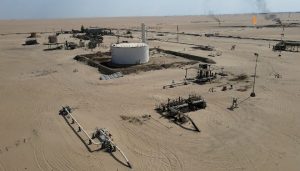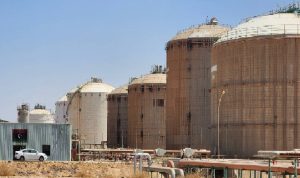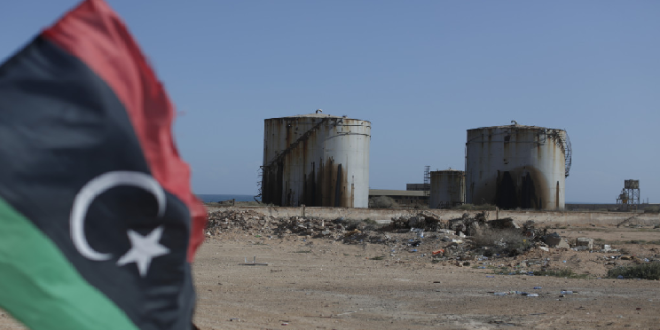31-08-2024
TRIPOLI/ BENGHAZI: More than half of Libya’s oil production, or about 700,000 barrels per day, was offline on Thursday and exports were halted at several ports as a standoff between rival political factions over the central bank and oil revenue threatens to end a four-year period of relative peace.
Libya’s National Oil Corp, which controls the country’s oil resources, said on Thursday that the average oil output stood at 591,024 barrels on Wednesday Aug. 28. Libya pumped about 1.18 million bpd in July.
 Total losses in the past three days following the oilfields closures were at 1,504,733 barrels, worth about $120 million, NOC added.
Total losses in the past three days following the oilfields closures were at 1,504,733 barrels, worth about $120 million, NOC added.
The crisis over control of the Central Bank of Libya threatens a new bout of instability in the country, a major oil producer that is split between eastern and western factions that have drawn backing from Turkey and Russia.
Ports in Libya’s hydrocarbon-rich Oil Crescent Es Sidra, Brega, Zueitina and Ras Lanuf halted export operations on Thursday, two engineers at the ports told media.
Four vessels had loaded 600,000 barrels of oil each in the eastern region that accounts for the bulk of the country’s exports two at Es Sidra, one at Brega and one at Zueitina – and departed earlier on Thursday, the engineers said.
Output at oilfields controlled by Waha Oil Company, a subsidiary of the National Oil Corporation, has dropped to 150,000 barrels per day from 280,000 bpd and is expected to fall further, engineers told media on Thursday.
Production has also been halted or reduced at the Sharara, Sarir, Abu Attifel, Amal and Nafoora fields, engineers have said.
That has taken roughly 700,000 bpd of oil output offline, according to media. Libya pumped about 1.18 million bpd in July.
Consulting firm Rapidan Energy Group has estimated production losses could reach between 900,000 and 1 million bpd and last for several weeks.
Eastern factions have vowed to keep oil production shut off until the internationally recognized Presidency Council and Government of National Unity in Tripoli, in the west, return veteran central bank governor Sadiq al-Kabir to his post.
 The Presidency Council, headed by Mohammed al-Menfi, said on Aug. 18 it was dismissing Kabir, a move rejected by the eastern-based House of Representatives parliament, and eastern commander Khalifa Haftar’s force called the Libyan National Army.
The Presidency Council, headed by Mohammed al-Menfi, said on Aug. 18 it was dismissing Kabir, a move rejected by the eastern-based House of Representatives parliament, and eastern commander Khalifa Haftar’s force called the Libyan National Army.
The North African member of the Organization of the Petroleum Exporting Countries has had little stability since the 2011 NATO-backed ouster of longtime leader Muammar Gaddafi. The east-west split of rival factions dates back to 2014.
Oil blockades have been used frequently as a political tactic in the chaos following the end of Gaddafi’s 42-year rule.
However, while smaller localized shutdowns have sometimes been resolved within days, larger blockades tied to major political or military struggles have sometimes lasted months. The longest major blockade, when Haftar stopped nearly all production in 2020 for eight months, was only resolved as part of a wider agreement when his assault on Tripoli collapsed.
Eastern Libyan commander Khalifa Haftar announced on Friday he would lift for one month his blockade of oil output and said he had agreed with the rival Tripoli government on “fair distribution” of energy revenue.
A resumption of oil exports after the eight-month blockade would relieve mounting financial pressure for both sides in the Libyan conflict and could remove a major obstacle towards a political settlement, but it is not yet clear if the declared agreement has wider support. (Int’l News Desk)
 Pressmediaofindia
Pressmediaofindia




